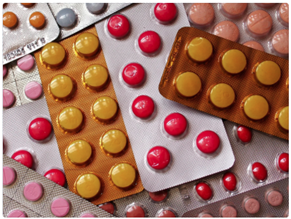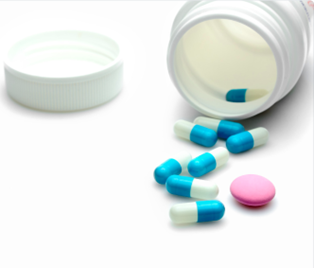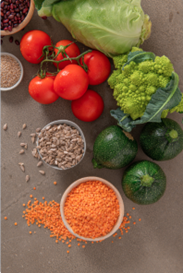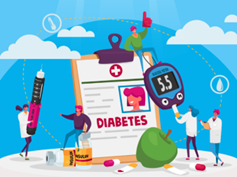Best Yeast Infection Treatment
Best Yeast Infection Treatment and Prevention –
 A Comprehensive Guide :
A Comprehensive Guide :
Yeast infections are a common problem that affects many women at some point in their lives. They’re caused by an overgrowth of the fungus Candida. Yeast infections can be uncomfortable and cause unpleasant symptoms such as itching, burning, and discharge. However, there are several ways to protect against or treat yeast infections. Here we describe and discuss the Best Yeast Infect Treatments and how to prevent infection recurrence.
Prevention is key when it comes to yeast infections. Wearing cotton underwear and loose-fitting clothing, avoiding scented products, and practicing good hygiene are all ideal ways to reduce the risk of getting a yeast infection. Additionally, taking probiotics and eating a healthy diet can help maintain a healthy balance of bacteria in the body. If a yeast infection does occur, there are several treatment options available, including over-the-counter antifungal creams and prescription medications.
 Best Yeast Infection Treatment – Key Takeaways
Best Yeast Infection Treatment – Key Takeaways
- Yeast infections are caused by an overgrowth of the fungus Candida.
- Prevention is key and can be achieved through good hygiene, wearing cotton underwear, and avoiding scented products.
- Treatment options include over-the-counter antifungal creams and prescription medications.
Symptoms of Yeast Infection
Yeast infections can cause a range of symptoms, which can vary depending on the area of the body affected. Some of the common symptoms of yeast infections include:
- Vaginal Yeast Infection: Burning, itching, and soreness around the vaginal area, pain during sex, and a thick, white, odorless discharge are some of the common symptoms of vaginal yeast infections.
- Oral Thrush: White patches on the tongue, inner cheeks, roof of the mouth, gums, or tonsils, soreness or redness in the mouth, and difficulty swallowing are some of the common symptoms of oral thrush.
- Skin Yeast Infection: Rash, itching, redness, and scaling on the affected area are some of the common symptoms of skin yeast infections.
- Penile Yeast Infection: Redness, itching, and soreness around the head of the penis, pain during sex or urination, and a white, clumpy discharge are some of the common symptoms of penile yeast infections.
It is important to note that these symptoms can also be caused by other conditions, so it is important to consult a healthcare provider for an accurate diagnosis.
In some cases, yeast infections can also cause systemic symptoms such as fatigue, joint pain, and digestive issues. However, these symptoms are less common and may indicate a more severe infection or an underlying medical condition.
If left untreated, yeast infections can also lead to complications such as recurrent infections, skin damage, and increased risk of sexually transmitted infections. Therefore, it is important to seek prompt medical attention if you suspect a yeast infection.
Prevention of Yeast Infection
 Yeast infections are a common occurrence that can be prevented by following simple steps. Prevention is always better than cure, and in this section, we will discuss some of the ways that can help prevent yeast infections.
Yeast infections are a common occurrence that can be prevented by following simple steps. Prevention is always better than cure, and in this section, we will discuss some of the ways that can help prevent yeast infections.
Hygiene
Maintaining good hygiene is essential to prevent yeast infections. Keeping the vaginal area clean and dry is crucial. Women should wipe from front to back after using the toilet to avoid spreading bacteria from the anus to the vagina. Also, avoid using scented soaps, bubble baths, and vaginal sprays that can irritate the area. Taking a shower instead of a bath can also help prevent infections.
Clothing and Underwear
What you wear can also affect your risk of getting a yeast infection. Tight-fitting clothes, especially those made of synthetic materials, can trap moisture and create a breeding ground for yeast. Wearing breathable underwear made of cotton can help keep the area dry and reduce the risk of infection. Avoid wearing tight-fitting pants or shorts, especially during hot weather.
Diet and Lifestyle
Diet and lifestyle changes can also help prevent yeast infections. Eating a healthy, low-sugar diet can reduce the risk of yeast overgrowth. Probiotics, such as those found in yogurt, can also help maintain a healthy balance of bacteria in the body. Avoid douching, as it can disrupt the natural balance of bacteria in the vagina. Hot tubs and pools can also increase the risk of infection, so it’s best to avoid them if possible.
In summary, preventing yeast infections is all about maintaining good hygiene, wearing breathable clothing, and making healthy lifestyle choices. By following these simple steps, you can reduce your risk of getting a yeast infection and enjoy a healthy, comfortable life.
Best Yeast Infection Treatments

Yeast infections are common and can be treated with over-the-counter or prescription medications, as well as home remedies. In this section, we will discuss the different treatment options available for yeast infections.
Over-the-Counter Medications for Yeast Infections
Over-the-counter antifungal medications are available in the form of creams, ointments, and suppositories. These medications contain active ingredients such as clotrimazole, miconazole, and tioconazole that help to kill the candida fungus that causes yeast infections. They are easy to use and can be effective in treating mild to moderate yeast infections.
It is important to follow the instructions on the packaging carefully and complete the full course of treatment, even if symptoms improve. Over-the-counter medications are generally safe and well-tolerated, but in rare cases, they can cause skin rash, itching, burning, or pain.
Prescription Treatments for Yeast Infections
 For more severe or recurrent yeast infections, prescription antifungal medications may be necessary. These medications include fluconazole, terconazole, and other oral or vaginal antifungal medications. Prescription medications are usually more potent than over-the-counter medications and may require a longer treatment course.
For more severe or recurrent yeast infections, prescription antifungal medications may be necessary. These medications include fluconazole, terconazole, and other oral or vaginal antifungal medications. Prescription medications are usually more potent than over-the-counter medications and may require a longer treatment course.
It is important to consult a healthcare provider before taking prescription medications, as they may interact with other medications or have side effects. Prescription medications may also be more expensive than over-the-counter medications.
Yeast Infection – Home Remedies
Home remedies for yeast infections are popular, but their effectiveness is not well-established. Some home remedies include:
- Tea tree oil: Diluted tea tree oil may be applied to the affected area.
- Boric acid: Boric acid vaginal suppositories may be used under the guidance of a healthcare provider.
- Coconut oil: Coconut oil may be applied topically to the affected area.
- Garlic: Garlic may be consumed or applied topically to the affected area.
- Oil of oregano: Oil of oregano may be applied topically to the affected area.
- Apple cider vinegar: Diluted apple cider vinegar may be applied topically or added to a bath.
- Vitamin C: Vitamin C supplements may be taken to boost the immune system.
- Essential oils: Some essential oils, such as lavender and peppermint, may be applied topically or added to a bath.
It is important to note that home remedies may not be effective and may even be harmful. Some home remedies, such as boric acid, can be toxic if used improperly. It is important to consult a healthcare provider before using any home remedies for yeast infections.
In addition to treatment, it is important to practice good hygiene and avoid irritants such as scented soap, bubble bath, and vaginal sprays. Wearing loose, breathable clothing and avoiding tight-fitting clothing can also help prevent yeast infections.
Diagnosis of Yeast Infection
Diagnosing a yeast infection may involve a combination of medical history, pelvic exam, and laboratory tests. Here are some things to keep in mind if you suspect you have a yeast infection:
Medical History
 During a medical history, the healthcare provider may ask about:
During a medical history, the healthcare provider may ask about:
- Symptoms: The most common symptoms of a yeast infection include vaginal itching, burning, and discharge.
- Previous infections: If you have had a yeast infection before, your healthcare provider may ask about the treatment you received and how effective it was.
- Medications: Certain medications, such as antibiotics and corticosteroids, can actually increase your risk of developing a yeast infection.
- Medical conditions: Certain medical conditions, such as diabetes and HIV, can also increase your risk of developing a yeast infection.
Pelvic Exam
During a pelvic exam, the healthcare provider will examine the external and internal genitalia for signs of infection, such as redness, swelling, and discharge. They may also collect a sample of vaginal discharge for laboratory testing.
RELATED ARTICLE: Pelvic Floor Therapy for Incontinence
Laboratory Tests
Laboratory tests may be done to confirm a yeast infection diagnosis. These tests may include:
- Microscopic examination: A sample of vaginal discharge is examined under a microscope to look for the presence of yeast.
- Culture: A sample of vaginal discharge is cultured in a laboratory to identify the type of yeast causing the infection.
Best Yeast Infection Treatment – When to See a Doctor

If you suspect you have a yeast infection, it is important to see a healthcare provider for an accurate diagnosis and appropriate treatment. Seek medical attention if:
- You have never had a yeast infection before
- You have symptoms that do not go away after treatment
- You have symptoms that are severe or accompanied by fever or pelvic pain
In conclusion, a yeast infection can be diagnosed through a combination of medical history, pelvic exam, and laboratory tests. If you suspect you have a yeast infection, seek medical attention for an accurate diagnosis and appropriate treatment.
Recurring Yeast Infections
Recurrent yeast infections, also known as recurrent vulvovaginal candidiasis, are a common problem for many women. It is defined as having four or more episodes of vaginal candidiasis within a year.
There are several factors that can increase the risk of recurrent yeast infections, including:
- Antibiotic use: Antibiotics can kill off the good bacteria in the vagina that help keep yeast in check.
- Hormonal changes: Changes in hormone levels, such as those that occur during pregnancy, can increase the risk of yeast infections.
- Uncontrolled diabetes: High blood sugar levels can promote the growth of yeast.
- Weakened immune system: A weakened immune system can make it harder for the body to fight off infections.
- Sexual activity: Sexual activity can introduce bacteria and other microorganisms into the vagina, increasing the risk of yeast infections.

To prevent recurrent yeast infections, women can take several steps, including:
- Avoiding douching and using scented products in the genital area.
- Wearing loose-fitting, breathable clothing and cotton underwear.
- Taking probiotics or eating foods that contain probiotics, such as yogurt.
- Managing blood sugar levels if they have diabetes.
- Using condoms during sexual activity.
If a woman does experience recurrent yeast infections, treatment options include:
- Longer courses of antifungal medication, such as fluconazole.
- Maintenance therapy with antifungal medication.
- Boric acid suppositories, which can be used to treat resistant yeast infections.
It is important for women to talk to their healthcare provider if they are experiencing recurrent yeast infections, as there may be underlying medical conditions that need to be addressed.
Yeast Infections –
Underlying Conditions and Risk Factors
Medical Conditions
Certain medical conditions can increase the risk of developing a yeast infection. People with diabetes, HIV, or a weakened immune system may be more susceptible to yeast infections. Obesity can also increase the risk of developing a yeast infection, as it can create warm and moist environments that are ideal for yeast growth.
Medications
Some medications can increase the risk of yeast infections. Antibiotics, for example, can kill the healthy bacteria that keep yeast in check, leading to an overgrowth of yeast. Birth control pills and hormone replacement therapy can also increase the risk of yeast infections, as they can alter the balance of hormones in the body.
Lifestyle Factors
Certain lifestyle factors can also increase the risk of developing a yeast infection. Wearing tight-fitting clothing, particularly in warm and moist environments, can create an ideal environment for yeast growth. Poor hygiene can also increase the risk of yeast infections, as can a diet high in sugar and refined carbohydrates.
It is important to note that while these factors can increase the risk of yeast infections, they do not necessarily cause them. Some people may be more susceptible to yeast infections due to genetic factors or other unknown causes. However, taking steps to address these risk factors can help reduce the likelihood of developing a yeast infection.
Conclusions
 Yeast infections ar a common occurrence that can be uncomfortable and frustrating to deal with. Fortunately, there are many ways to protect against or treat them.
Yeast infections ar a common occurrence that can be uncomfortable and frustrating to deal with. Fortunately, there are many ways to protect against or treat them.
One effective method is to maintain good hygiene practices, such as washing regularly and keeping the affected area clean and dry. Avoiding tight-fitting clothing and using breathable fabrics can also help prevent yeast infections.
For those who have already developed a yeast infection, antifungal medications are often the first line of defense. These medications work by killing or inhibiting the growth of the yeast. Some natural remedies, such as tea tree oil and garlic, also have antifungal properties and may provide relief.
It May Not Actually Be a Yeast Infection!
It’s important to note that not all cases of vaginal itching or discharge are caused by yeast infections. Other conditions, such as bacterial vaginosis or sexually transmitted infections, may have similar symptoms. It’s essential to see a healthcare provider for an accurate diagnosis and appropriate treatment.
Overall, taking steps to maintain good hygiene and using antifungal medications or natural remedies can help protect against or treat yeast infections. By being aware of the symptoms and seeking medical attention when necessary, individuals can effectively manage this common condition.
Best Yeast Infection Treatment:
Frequently Asked Questions
How to prevent yeast infections?
To prevent yeast infections, individuals should practice good hygiene, avoid wearing tight-fitting clothing, and avoid using scented products in the genital area. Additionally, individuals should avoid douching and should wear breathable cotton underwear.
What are the common symptoms of yeast infections?
Common symptoms of yeast infections include itching, burning, and soreness in the genital area, as well as a thick, white discharge. Some individuals may also experience pain during sexual intercourse or urination.
What are the best home remedies for yeast infections?
Home remedies for yeast infections include using plain, unsweetened yogurt, garlic, tea tree oil, and apple cider vinegar. These remedies can be applied topically or ingested orally to help alleviate symptoms.
What are the best over-the-counter treatments for yeast infections?
Over-the-counter treatments for yeast infections include antifungal creams, suppositories, and tablets. These treatments can be found at most drugstores and can help alleviate symptoms within a few days.
 What are the best foods to eat to prevent yeast infections?
What are the best foods to eat to prevent yeast infections?
To prevent yeast infections, individuals should focus on eating a balanced diet that is rich in whole grains, fruits, and vegetables.
Additionally, foods that contain probiotics, such as yogurt and kefir, can help maintain a healthy balance of bacteria in the body.
When should I see a doctor for a yeast infection?
Individuals should see a doctor for a yeast infection if their symptoms are severe, if they have never had a yeast infection before, or if they are experiencing recurrent infections. Additionally, individuals with weakened immune systems or who are pregnant should seek medical attention if they suspect they have a yeast infection.

